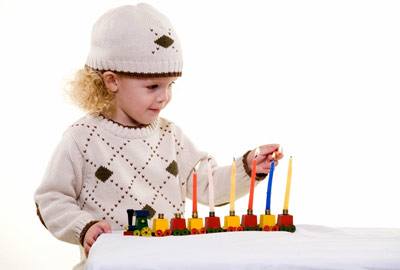
The holiday season is about more than just Thanksgiving and Christmas. There are other holidays that occur around the same time, and it’s enjoyable and enlightening to learn about these other celebrations.
Here are some ideas about teaching your children about various other holiday celebrations.
1. Hanukkah or Chanuk
ah
Sometimes called the Festival of Lights, Hanukkah is an eight-night festival that commemorates the victory of a band of Hebrew people, called the Maccabees and led by Judah, over the Syrian King Antiochus IV (or Antiochus Epiphanes). According to the Hebrew Scriptures, there was not enough oil to light the temple lamps for more than one night, and it took eight nights to dedicate the temple. Miraculously, the small amount of oil lasted eight nights.
Hanukkah occurs on the 25th day of Kislev on the Hebrew calendar. This means that the holiday may be at the end of November or December, and anywhere in between.
Here are some ideas to help your children celebrate and appreciate Hanukkah.
* Light the Menorah each night for the eight nights of that year’s holiday. If it is near Christmastime, incorporate the lamp with the Christmas lights and decorations.
* Read a children’s story about the Maccabees and their victory over Antiochus Epiphanes.
* Play with the traditional toy called the dreidel. These little tops are printed with various Hebrew letters that represent the miracle of Hanukkah.
2. Diwali
Another festival celebrating lights, Diwali is a holiday ushering in the Hindu New Year. This year (2010), it will occur on November 5. Hindus light and open their homes to welcome Lakshmi, the goddess of wealth. If a home is not lit, it is said, Lakshmi will not visit. Little clay lamps, called diyas, are lit throughout the home to light her way.
Diwali lasts anywhere from three to five days. The last day is a special celebration for siblings called Bhaiya Dooj. It is a brother-sister celebration based on an elaborate legend about a brother and sister who risked their lives and reputations to have a relationship. Love and affection between brothers and sisters is celebrated during Bhaiya Dooj.
For your children, try incorporating some Diwali traditions in your home, such as:
* A special time between brothers and sisters, or cousins, or other opposite-sex relatives can be arranged. Brothers can give a special gift to sisters, and sisters can prepare special food for their brothers.
* Light several diyas around your home. There are patterns and directions online for making your own diays, which is a craft many children would enjoy.
3. Kwanzaa
This festival is based on traditional African harvest rituals and celebrations, and on the seven values of African culture (unity, self-determination, collective work, cooperative economics, purpose, creativity, and faith). Created by Dr. Maulana Karenga in 1966, Kwanzaa begins on December 26 and is a seven-day celebration of family, community and culture.
Celebrators of Kwanzaa enjoy feasting, gift giving, and the lighting of the special candle lamp called a kinara. There are seven candles in the kinara, one for each night of festivities and for each of the seven values.
You and your children can celebrate Kwanzaa, too, or incorporate elements of this holiday in your family traditions. Some ideas include:
* Light a kinara. Like the other holidays, the lighting of lamps and candles works nicely with all kinds of holiday traditions. Remind your children of the seven values the kinara represents.
* Serve traditional Kwanzaa food such as peanut soup, okra, and yams.
* Read a story about each of the seven kinara candles. There is a story behind each candle and its value.

